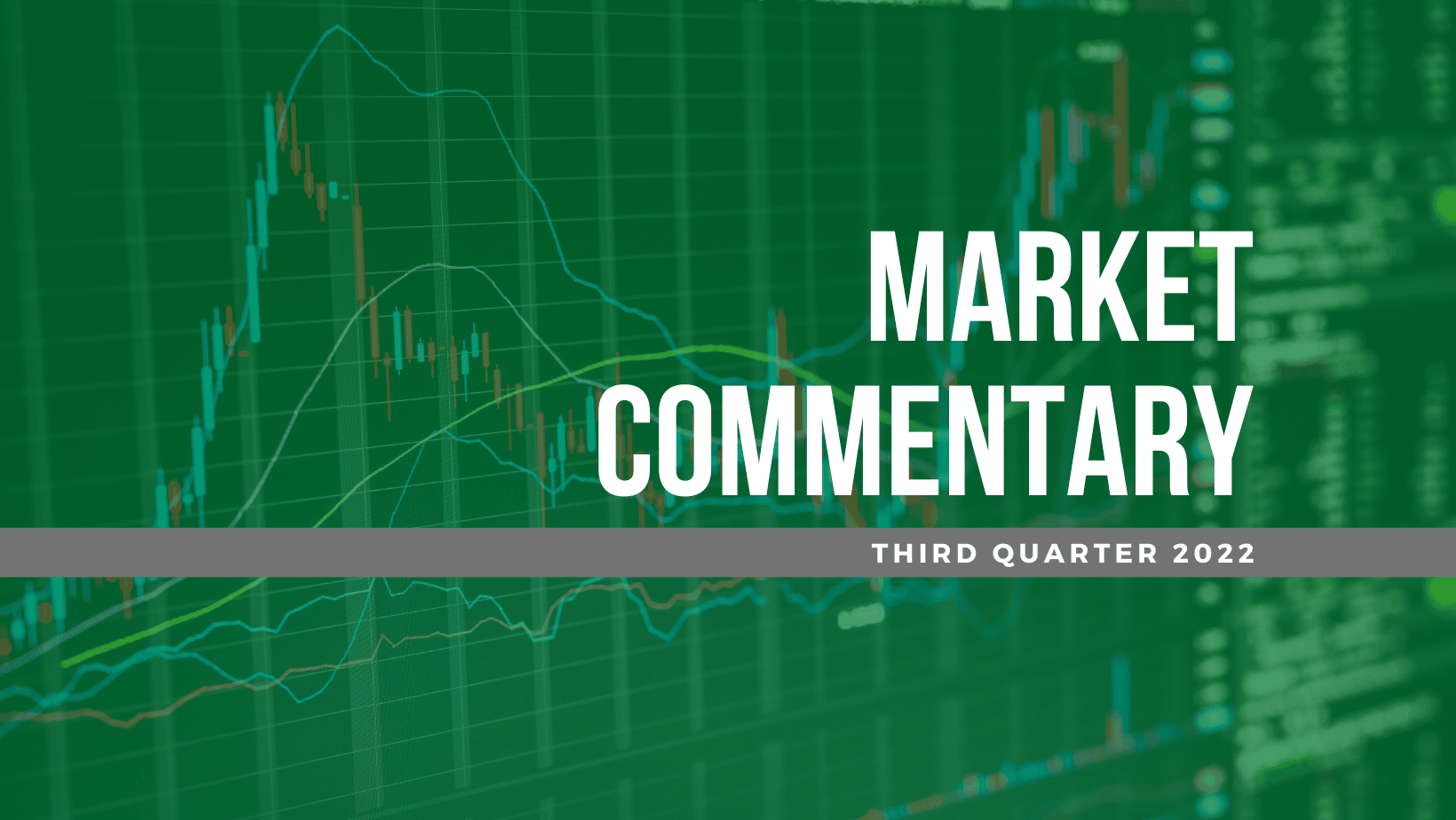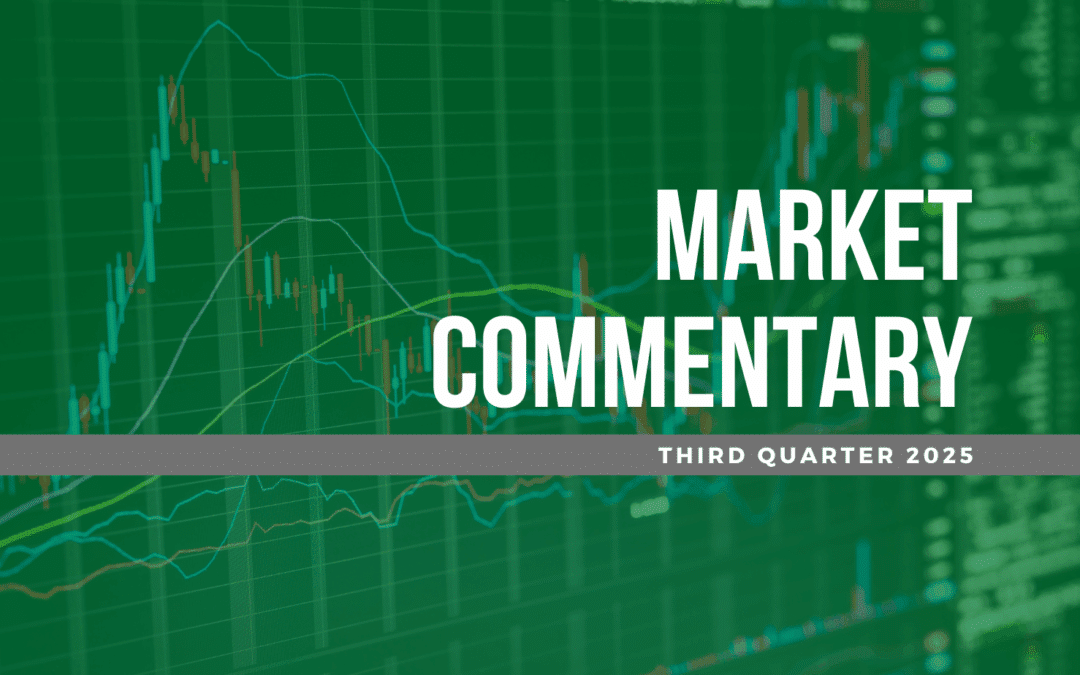Economic Overview
By Dr. Mark Pyles
For as much as happened during the third quarter (Q3) of 2022, we end it with many of the same questions that were front of mind at the beginning. Financial markets found a kindling of optimism during the last two weeks of the second quarter (Q2) based on hopes that inflation would soon begin to decline. This, combined with expectations of slowing economic growth, led many to feel the Fed would use this opportunity to ease or pause their pace of tightening in the latter part of 2022, which led to a sustained rally in risk assets through the first half of Q3.
Unfortunately, the beliefs that underpinned the rally proved a bit premature. With much to consider, it is perhaps helpful to provide updates on the three pillars of economic interest that collectively drive the majority of both current condition and sentiment. These pillars – inflation, economic growth, and the labor market – are all seemingly near inflection points and, as such, offer both hope and confusion as we navigate a bumpy exit from the pandemic period.
Of the three, inflation has truly been the dominate point of concern over the past several quarters. What was hoped to be transitory inflation following massive economic stimulus, stifled supply chains, and pent-up demand from COVID turned out to be far more entrenched. July brought a collective sigh of relief when we finally got solid evidence it might begin the journey back to normalcy. Headline CPI sharply decreased from 1.3% month-over-month (MoM) in June to a flat 0.0% for the month of July. This allowed year-over-year (YoY) rates to decrease from 8.8% to 8.5%. August CPI provided another move lower to 8.3%. However, much of this decrease was driven by the volatile energy segment of the economy, and in particular gasoline prices decreasing from a peak of over $5 per gallon in mid-June to the current levels of around $3.80. In fact, when food and energy are removed in measuring core CPI levels, we have unfortunately yet to see the decline we hoped. Instead, the August print for Core CPI surprised to the upside, with an increase of 0.6% MoM and 6.3% YoY. Further, from the last CPI report, over 70% of the CPI basket is growing at a rate in excess of 4% YoY.
For specificity, the stated goal of the Fed is to achieve long-term inflation of 2% in their preferred metric of the core personal consumption expenditures (PCE) index. Core PCE came in for August at 4.9%, also continuing to rise while surprising to the upside. While somewhat more appetizing than the CPI, this still paints a picture of prices rising much faster than desired in core components of our economy. On the other hand, despite all the negatives, there are many reasons to support the notion that lower price pressures are indeed upon the near horizon. For example, the Producer Price Index (PPI) showed slowing in final demand for both July and August, which should lead to a decline in inflation to follow. In collaborating data, the Institute for Supply Management (ISM) Survey depicted a sharp decrease in prices paid in August, which marked the fifth month in a row of the downward trend.
Commodity prices also continue to fall, with the Bloomberg Commodity Index down over 15% from its peak in early June. This is driven largely by the decrease in the price of oil of over 30% over the same time period. Further, inflation expectations have softened – with the Michigan Sentiment Survey showing a rate of 4.7% for 1-year expectations and 2.7% for longer term (5-10 years). While these numbers are still elevated beyond the Fed’s stated mandate, they do not indicate signs of inflation rates being particularly unanchored – which is one of the greater fears of both the Fed and market participants who view the current condition through the historical perspective of the late 1970s through early 1980s.
Turning to the growth front, the economic elephant in the room is that we are coming off two consecutive quarters of negative real GDP growth (-1.6% in Q1, followed by -0.6% in Q2) to begin the year. This has led to some debate as to whether the US economy is already in a recession, although it is unlikely the National Bureau of Economic Research (NBER) would make that classification official with current data. Although the Atlanta Fed GDP estimate for Q3 is currently at 2.4%, most professional economists are now predicting growth for 2022 to hover just in positive territory, with outlooks for 2023 skewing more pessimistic.
Economic growth will ultimately be driven by the consumer. Personal consumption, by far the largest contributor to GDP, actually held up relatively well during both quarters, at 1.8% in Q1 and 2.0% in Q2. To this point, the consumer has maintained spending levels even in the face of extraordinarily high inflation – and have been willing to do so at the expense of savings. The personal savings rate as a percentage of disposable income stands at 3.5%, which is considerably below the 10-year average prior to the pandemic of 7.4%, and even further below the double-digit highs during the pandemic.
Collectively, in the face of higher inflation and slowing economic growth, the resilience of the US consumer could be tested. However, the third pillar (the labor market) is helping to support us with impressive stability. When consumers have job security, they are more capable and willing to release savings to maintain a lifestyle in the face of higher prices. To that point, the labor market has remained remarkably resilient despite inflation and growth headwinds. The four-week moving average of jobless claims has decreased to 207,000, down from 250,000 during the first week of August and trending towards the low point of 170,500 in early April. Payrolls continue to increase beyond expectation, while the number of job openings (measured by JOLTS) still sits at over 1.1 million. The unemployment rate did finally tick up from 3.5% to 3.7% in August, but this was due to a welcomed increase in the participation rate rather than any softness in labor demand.
Thus, of the three pillars of economic concern, we have one (inflation) that stubbornly continues to provide angst, another that is trending in a negative direction (economic growth), and a third (the labor market) that remains remarkably indifferent to the first two. We can also add other key economic data trends to the discussion. For example, the housing market continues to decline significantly in the face of mortgage rates that have approximately doubled YTD. On the other end of the trend, the US Dollar is seeing strength of historic levels, increasing in excess of 15% YTD due to economic and financial market uncertainty around the globe. This will reduce profitability for firms with significant international exposure, providing another headwind to future growth.
A primary question facing investors is how all of these interacting funnels of information flow into the Fed’s calculus regarding monetary action. During Q3, the Fed remained steadfast, both in action and word, in their pursuit of bringing inflation down to their target level. After 150 basis points (BP) of tightening in the first two quarters of the year, we saw additional increases of 75BP at both the July and September meetings. This brings the current Fed Funds Rate to an upper target range of 3.25%. The freshly released Summary of Economic Projections (SEP) now predicts a terminal rate of 4.6% in 2023, implying significant tightening remains. This will presumably occur at the same time of significant balance sheet reductions, amplifying the effect. The Fed has publicly stated its willingness to suffer an extended period of below trend economic growth and a softer labor market in order to slow inflation. Unfortunately, the effect of monetary policy occurs at a significant and variable lag in influencing actual economic data output. As a result, the chance of policy error has increased throughout the quarter and will continue for as long as the tightening continues.
Ultimately, as we head into the final quarter of 2022, we continue to find ourselves living, both as citizens and investors, through a game of tug-of-war between inflation that stubbornly resists taming and an economy showing clear signs of slowing. We wrote in last quarter’s economic overview of the race between which would blink first – inflation or growth. It currently appears that the answer to that question is growth, which admittedly increases the likelihood of a harder landing going into the new year. However, it is certainly worth remembering the U.S. economy does remain strong relative to previous periods leading into significant downturns. Once inflation finally begins to decline – and there are significant reasons to believe it will soon be doing so, the Fed should be able to relax their firm tightening stance. With a historically strong labor market providing the fuel of optimism to the population, a recovery from the downturn could prove to be an outstanding investment opportunity.
Ultimately, as we head into the final quarter of 2022, we continue to find ourselves living, both as citizens and investors, through a game of tug-of-war between inflation that stubbornly resists taming and an economy showing clear signs of slowing.
The Stock Market
By Walter Todd
As a life-long South Carolina fan, I am very familiar with the feeling of having my hopes raised at the beginning of a game or season only to have them crushed in the end. So it was the case in the equity market during the third quarter of 2022 (Q3). The market rallied nearly 14% from the start of July through mid-August only to end with the worst September since 2002 (S&P 500 down -9.2%). The late quarter slide actually started in earnest on August 26th with an 8-minute speech from Fed Chairman Jay Powell, firmly stating the case that the Federal Reserve was not close to being done fighting inflation. Add in a “hotter” than expected CPI report on September 13 and the market never looked back (or up as the case may be) for the rest of the quarter, closing on the lows September 30. The good news? It’s now the seasonally strong fourth quarter and we are in a mid-term election year. More on this later. For now, let’s unpack the numbers for Q3.
For the quarter, the S&P 500 Index closed down -4.9%, including dividends, and has fallen -23.9% for the nine-month period ending September 30, 2022. Small-cap stocks (as measured by the S&P 600) performed slightly worse, ending the quarter lower by -5.2% and -23.2% year-to-date. This was again different from another small cap index, the Russell 2000, which was off by -2.2% for the quarter and -25.1% YTD. After outperforming the US earlier in the year, international stocks succumbed to a myriad of headwinds in the most recent period with Developed International Markets falling by -9.3% for the quarter (as measured by the EAFE Index). Emerging Markets (EM) fell further, down -11.5% for the quarter (using the MSCI Emerging Market Index). For the year-to-date period Developed International and Emerging Markets ended lower by -26.7% and -27.0%, respectively. Putting the US and International Markets together, the MSCI All-Country World Index (ACWI) finished down -6.7% for the three-month period and -25.3% YTD.
The sector performance in the quarter was mixed, with the final week of the quarter significantly influencing the rankings. For example, Utilities dropped from 2nd to 6th place for the quarter during the final week of trading. In all, nine of eleven sectors were negative for the period and just four outperformed the broader market. Consumer Discretionary, Energy, Financials and Industrials were the top four sectors, the first two up between 2% and 4% and the others down -3% to -5%. Materials, Real Estate and Communication Services were the worst performers for the period, dropping between -7% and -13% over the most recent three months. The remaining four sectors of Healthcare, Utilities, Technology and Consumer Staples were in the middle, falling -5% to -7%. For the year-to-date period, Energy still remains the leadership area and only positive sector, rising over 34%. Utilities down less than -7% and Consumer Staples and Healthcare down between -12% and -13% through nine months highlight the defensiveness of the market so far in 2022. Real Estate, Consumer Discretionary, Technology, and Communication Services have all dropped in excess of -28% YTD.
We talked last quarter in these pages about the Federal Reserve needing to take their proverbial foot off the brakes for equity markets to rebound in the coming months. Investors anticipated that move in July and early August only to see the Fed put its foot down even harder with further aggressive interest rate increases and hawkish forward guidance. This dynamic pushed the US Dollar higher, tightened financial conditions and resulted in a third straight quarter of negative equity returns. This is the longest streak since a six-quarter stretch from the fourth quarter of 2007 through the first quarter of 2008. When will the Fed stop tightening? The market is anticipating by March or May next year. What I feel confident in saying for sure is that we are much closer to the end of this tightening cycle than the beginning. As such, as bad as things look and feel right now, it is time to see the glass half full in my opinion. A few dynamics to consider. Prior to 2022, since 1950, the S&P has been down 25% or more eight times – it was higher 1-year later in 7 out of 8 instances by an average of over 21%. This is the fourth quarter of a mid-term year. Fourth quarters are the seasonally strongest period for stocks in any year, but more so during a mid-term. In addition, since 1942, the 12-month period following a mid-term election has always been positive for equities (as measured by the S&P 500). Of course, past performance is no guarantee of future performance, but the weight of evidence would seem to suggest that, similar to the lows reached in mid-June this year, a lot of bad news has been discounted.
The Bond Market
By John Wiseman
Rates drifted lower into the Federal Reserve meeting at the end of July where they reinforced their commitment to increase rates. As economic data persisted in a non-Fed friendly manner outlined in the Economics section above, rates marched to new highs producing the 3rd consecutive quarter of bond losses and on track for the worst year on record as measured by the Bloomberg Aggregate Index. The yield on the 2-Year Treasury Note increased by 133 basis points (1.33%) this quarter to 4.28%, which is a whopping 355 basis points higher than the start of the year. The resulting total returns for those periods are -1.70% for the quarter and -4.63% for the year. The yield on the 10-Year Treasury Note finished the quarter at 3.83% which is 82 (0.82%) and 232 basis points (2.32%) higher on the quarter and year, respectively, resulting in total returns of -5.29% and -16.83%. The yield curve is inverted (shorter maturity yields are higher than longer ones) and reached its deepest inversion in 40 years. Even though longer rates haven’t moved up as much as shorter ones, the duration effect is more impactful to longer bonds. For this reason, we favor short-to-intermediate bonds here and are remaining fully invested.
Corporate bonds outperformed Treasuries in the third quarter. The spread of the Bloomberg Intermediate Corporate Index moderated much of the quarter but vaulted higher over the last two weeks to end the quarter where it began – at 139 basis points (1.39%). The total return of this index was -3.11% for the quarter and -11.81% for the year. Investment grade spreads (the amount of yield over treasuries to compensate investors for company risk) rose to the highest level since 2020 and pushed overall yields to 5.7% –
the highest level since 2009. Interestingly, spreads of companies rated below investment grade (high yield) have not surpassed the level reached in July of this year. Funding issues are a problem for some entities, so credit selection is of utmost importance.
Municipal bonds couldn’t escape the selling pressure but remain the best relative performers in fixed income. The Bloomberg 5-Year Municipal Index ended the quarterly period with a total return of -2.71%, -8.06% for the year. The ratio of the 5-Year Municipal to Treasury, a measure of relative value, is 77% which is slightly below the ten-year average. The 10-Year ratio offers a little better value at 85%. Issuance of municipal bonds is about 15% below last year according to data compiled by Bloomberg. Faced with redemptions, municipal mutual funds have been net sellers of bonds. We continue to favor municipal bonds for investors in higher tax brackets.
In Summary, while bonds have suffered the worst performance on record in 2022 and over the past year, that is in the rearview mirror. A circumstance set up by years of artificially low interest rates culminating with, at one point in 2020, over $18 trillion of global bonds with negative yields. That number has fallen by 90% as of today. As rates normalize and we look forward, one could argue this is the best fixed income investing environment in well over a decade, with 2-year Treasuries yielding 4% and similar maturity investment grade corporate bonds yielding over 5%. Bonds are back.
Market Indicators
Source: Bloomberg
The information contained within has been obtained from sources believed to be reliable but cannot be guaranteed for accuracy. The opinions expressed are subject to change from time to time and do not constitute a recommendation to purchase or sell any security nor to engage in any particular investment strategy. Investment Advisory Services are offered through Greenwood Capital Associates, LLC, an SEC-registered investment advisor.










